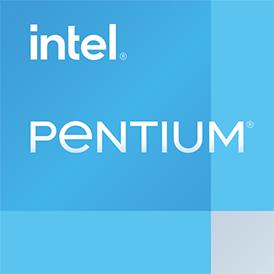CPU comparison with benchmarks
|
 |
-VS- |
 |
CPU lineage |
AMD EPYC 7F32 or AMD EPYC 7F32 – which processor offers superior performance? In this comparison, we examine disparities and assess which of these two CPUs outperforms the other. We delve into technical specifications and benchmark outcomes. The AMD EPYC 7F32 features 8 processor cores and has the capability to manage 16 threads concurrently. It was released in Q2/2020 and belongs to the 2 generation of the AMD EPYC series. To use the AMD EPYC 7F32, you'll need a motherboard with a SP3 socket. The Intel Pentium Gold G7400E features 2 processor cores and has the capability to manage 4 threads concurrently. It was released in Q1/2022 and belongs to the 11 generation of the Intel Pentium series. To use the Intel Pentium Gold G7400E, you'll need a motherboard with a LGA 1700 socket.
|
| AMD EPYC 7002 |
Group |
Intel Pentium G7000 |
| 2 |
Generation |
11 |
| Desktop / Server |
Segment |
Desktop / Server |
| AMD EPYC 7F32 |
Name |
Intel Pentium Gold G7400E |
| AMD EPYC |
Family |
Intel Pentium |
| |
| |
CPU Cores and Base Frequency |
The AMD EPYC 7F32 has 8 CPU cores and can calculate 16 threads in parallel.
The clock frequency of the AMD EPYC 7F32 is 3.7 GHz
and turbo frequency for one core is 3.9 GHz.
The number of CPU cores greatly affects the speed of the processor and is an important performance indicator.
The Intel Pentium Gold G7400E has 2 CPU cores and can calculate 4 threads in parallel.
The clock frequency of the Intel Pentium Gold G7400E is 3.6 GHz
|
| No |
Overclocking |
No |
| 8 |
CPU Cores |
2 |
| 8x |
Cores |
2x Golden Cove |
| normal |
Core architecture |
normal |
| 3.7 GHz |
Frequency |
3.6 GHz |
| 3.8 GHz |
Turbo Frequency (all cores) |
None |
| 3.9 GHz |
Turbo Frequency (1 core) |
None |
| Yes |
Hyperthreading |
Yes |
| 16 |
Threads |
4 |
| |
| |
Internal Graphics |
The AMD EPYC 7F32 does not have integrated graphics. The Intel Pentium Gold G7400E has integrated graphics, called iGPU for short. Specifically, the Intel Pentium Gold G7400E uses the Intel UHD Graphics 710, which has 128 texture shaders and 16 execution units. The iGPU uses the system's main memory as graphics memory and sits on the processor's die.
|
| -- |
Direct X |
12 |
| -- |
Generation |
13 |
| -- |
Max. displays |
-- |
| -- |
Release date |
Q1/2022 |
| -- |
Technology |
14 nm |
|
GPU name |
Intel UHD Graphics 710 |
| -- |
Execution units |
16 |
| -- |
GPU frequency |
0.3 GHz |
| 0 bytes |
Max. GPU Memory |
32.0 GB |
| -- |
GPU (Turbo) |
1.35 GHz |
| -- |
Shaders |
128 |
| |
| |
Artificial Intelligence and Machine Learning |
| -- |
AI hardware |
-- |
| -- |
AI specifications |
-- |
| |
| |
Hardware codec support |
A photo or video codec that is accelerated in hardware can greatly accelerate the working speed of a processor and extend the battery life of notebooks or smartphones when playing videos.
|
| -- |
VP9 |
Decode / Encode |
| -- |
h265 / HEVC (8 bit) |
Decode / Encode |
| -- |
h264 |
Decode / Encode |
| -- |
AVC |
Decode / Encode |
| -- |
VP8 |
Decode / Encode |
| -- |
AV1 |
Decode |
| -- |
VC-1 |
Decode |
| -- |
JPEG |
Decode / Encode |
| -- |
h265 / HEVC (10 bit) |
Decode / Encode |
| |
| |
Memory & PCIe |
The processor supports a maximum memory capacity of 128.0 GB distributed across 2 memory channels. It offers a peak memory bandwidth of 76.8 GB/s. Both the type and quantity of memory can have a substantial impact on the overall system performance.
|
| DDR4-3200 |
Memory type |
DDR4-3200, DDR5-4800 |
| 8 |
Memory channels |
2 |
| pci |
PCIe |
pci |
| Yes |
AES-NI |
Yes |
| 204.8 GB/s |
Bandwidth |
76.8 GB/s |
| 0 bytes |
Max. Memory |
128.0 GB |
| Yes |
ECC |
Yes |
| |
| |
Thermal Management |
The processor has a thermal design power (TDP) of 180 W watts.
TDP indicates the cooling solution needed to effectively manage the processor's heat. It generally provides an approximate indication of the actual power consumption of the CPU itself.
The processor has a thermal design power (TDP) of 46 W watts.
|
| -- |
Tjunction max |
100 °C |
| 180 W |
TDP (PL1 / PBP) |
46 W |
| |
| |
Technical details |
The AMD EPYC 7F32 is manufactured using a 7 nm process.
A smaller manufacturing process indicates a more contemporary and energy-efficient CPU.
In total, this processor boasts a generous 128.0 MB cache.
A substantial cache can significantly enhance the processor's performance, particularly in scenarios like gaming.
The Intel Pentium Gold G7400E is manufactured using a 10 nm process.
In total, this processor boasts a generous 6.0 MB cache.
|
| Rome (Zen 2) |
Architecture |
Alder Lake S |
| AMD-V, SVM |
Virtualization |
VT-x, VT-x EPT, VT-d |
| 7 nm |
Technology |
10 nm |
| 0 bytes |
L2-Cache |
2.5 MB |
| -- |
Part Number |
-- |
| x86-64 (64 bit) |
Instruction set (ISA) |
x86-64 (64 bit) |
| SP3 |
Socket |
LGA 1700 |
| Windows 10, Linux |
Operating systems |
Windows 10, Linux |
| Technical data sheet |
Documents |
Technical data sheet |
| 2100 $ |
Release price |
79 $ |
| 128.0 MB |
L3-Cache |
6.0 MB |
| Chiplet |
Chip design |
Monolithic |
| Q2/2020 |
Release date |
Q1/2022 |
| SSE4a, SSE4.1, SSE4.2, FMA3, AVX2 |
ISA extensions |
SSE4.1, SSE4.2, AVX2 |
| |
| |
 iGPU - FP32 Performance (Single-precision GFLOPS)
iGPU - FP32 Performance (Single-precision GFLOPS)

